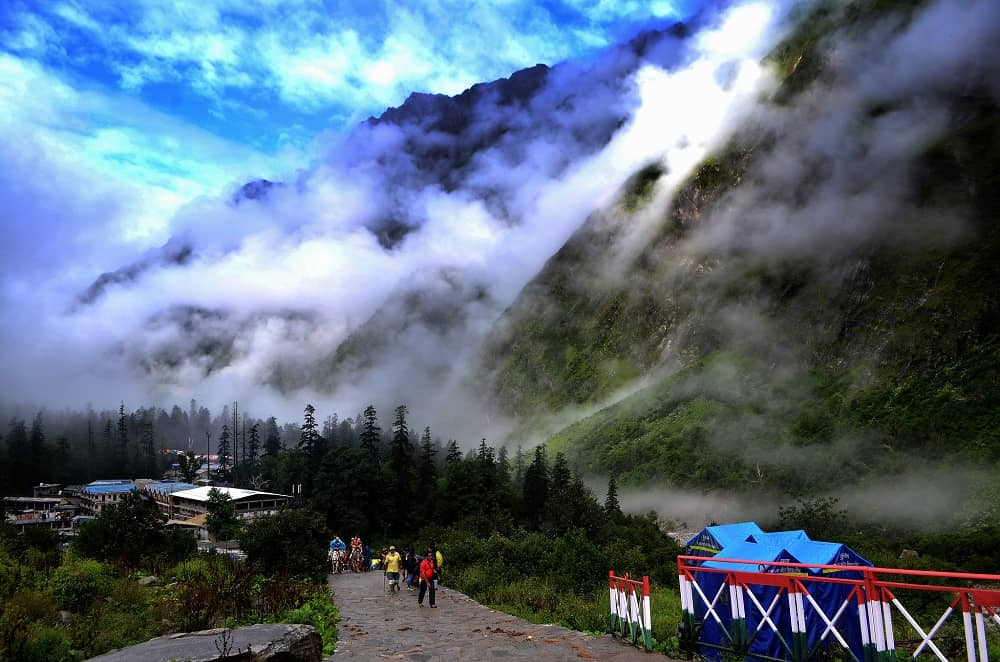

Ghangaria village, nestled in the northern Indian state of Uttarakhand, serves as a picturesque basecamp for pilgrims and trekkers heading towards the sacred Sikh shrine of Hemkunt Sahib and the stunning Valley of Flowers National Park. The history of tourism in Ghangaria is intricately linked to the spiritual significance of Hemkunt Sahib and the natural allure of the Himalayas.
Hemkunt Sahib, located at an elevation of 4,633 meters above sea level, is a major pilgrimage site for Sikhs. The history of pilgrimages to this gurdwara dates back to the rediscovery of the site in the 1930s. It is believed to be the place where Guru Gobind Singh, the tenth Sikh Guru, meditated in his previous life. Despite its challenging terrain and remote location, the devotion of the pilgrims led to the establishment of a steady flow of visitors, thus planting the seeds for tourism in the Ghangaria region.
Initially a modest stopover, Ghangaria village has evolved over the years to accommodate the increasing number of visitors. Due to the extreme weather conditions and the difficult terrain, the village is accessible only from June to September. Facilities in Ghangaria include guest houses, eateries, and camping sites, which cater to the needs of both pilgrims and trekkers.
With the establishment of the Valley of Flowers National Park as a UNESCO World Heritage Site in 1982, Ghangaria witnessed a rise in ecotourism. The enchanting landscapes filled with endemic flora and fauna attracted nature lovers and photographers from around the world. This development marked a new chapter in Ghangaria’s tourism history, diversifying its appeal beyond religious tourism.
In recent years, sustainable tourism has been a growing trend in the region. Efforts are made to minimize the environmental impact of tourism, and there is an increasing awareness among tour operators and visitors about the importance of preserving the pristine nature of the Himalayas. Initiatives to manage waste, use solar energy, and promote eco-friendly practices are in place to ensure the sustainability of tourism activities in Ghangaria.
Alongside sustainability, another trend is the digitization of travel experiences. With improved connectivity, online booking systems for accommodations and eco-friendly travel packages have become more prevalent, making it easier for travelers to plan their visit to Ghangaria and the surrounding areas.
Adventure tourism is also on the rise, as Ghangaria serves as the starting point for treks to not just Hemkunt Sahib and the Valley of Flowers but also other high-altitude treks and expeditions in the region. The growing demand for adventure activities has led to an increase in the number of local guides and tour operators offering customized trekking experiences.
Despite the evolving trends, the essence of Ghangaria’s tourism remains rooted in its religious and natural heritage. As it grows, the village continues to offer a serene retreat for those seeking spiritual solace and an untouched haven for nature lovers.
Ghangaria village has come a long way since it first emerged as a pivotal stop for pilgrims. Today, it stands as a symbol of harmony between spirituality, nature, and sustainable tourism. The devotion to Hemkunt Sahib and the enchanting beauty of the Valley of Flowers continue to draw visitors, making Ghangaria a unique destination in the heart of the Himalayas.